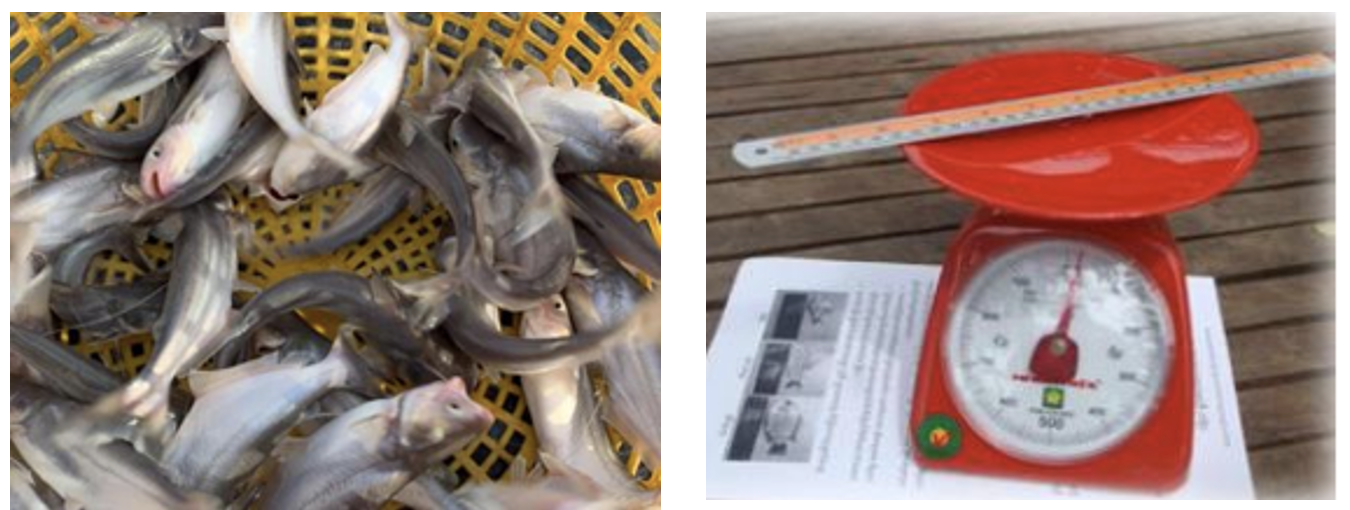
Management and maintenance

• In the culturing process, take the attention to the following important points:
Control on water quality: Check water quality once a week on pH and ammonia (NH3) levels.
Manage water quality appropriately according to the fish conditions to prevent diseases and factors that harm to the farming process.
Water quality parameter table (Pangasius disease management of the Aquaculture Development Department of the Fisheries Administration)


• Monitor fish growth:
Sampling
Sampling fish every month is the best way to monitor growth rates, check fish health, estimate the percentage of fish remaining in the pond, analyze the FCR, and ultimately calculate the amount of feed the fish should feed next.
The method of taking fish samples is to capture between 20-30 fish using nets or other devices at 3-4 different locations in the pond, then weigh the fish and record the number and weight of the fish.

Photo 05: Catching fish, weighing, counting the number of fish, and recording each fish.
Then calculate the average weight of fish per head using the formula ÷

Based on this result, the total weight of fish in the pond and the FCR can be calculated using the formula shown above, and the quality of the feed being given to the fish can be assessed.
• Monitor fish activities:
Monitor regularly, especially in the early morning and evening, because this is when the dissolved oxygen level in the water rapidly change and can cause fish harmful.
In case of fish gulping to the surface and swimming abnormally, need to pump the water in the pond by spraying or pumping additional water to adjust the toxic substances at the bottom of the pond and increase dissolved oxygen in the water.
In addition, stop feeding for 1-2 days and change 30-50% of the water.